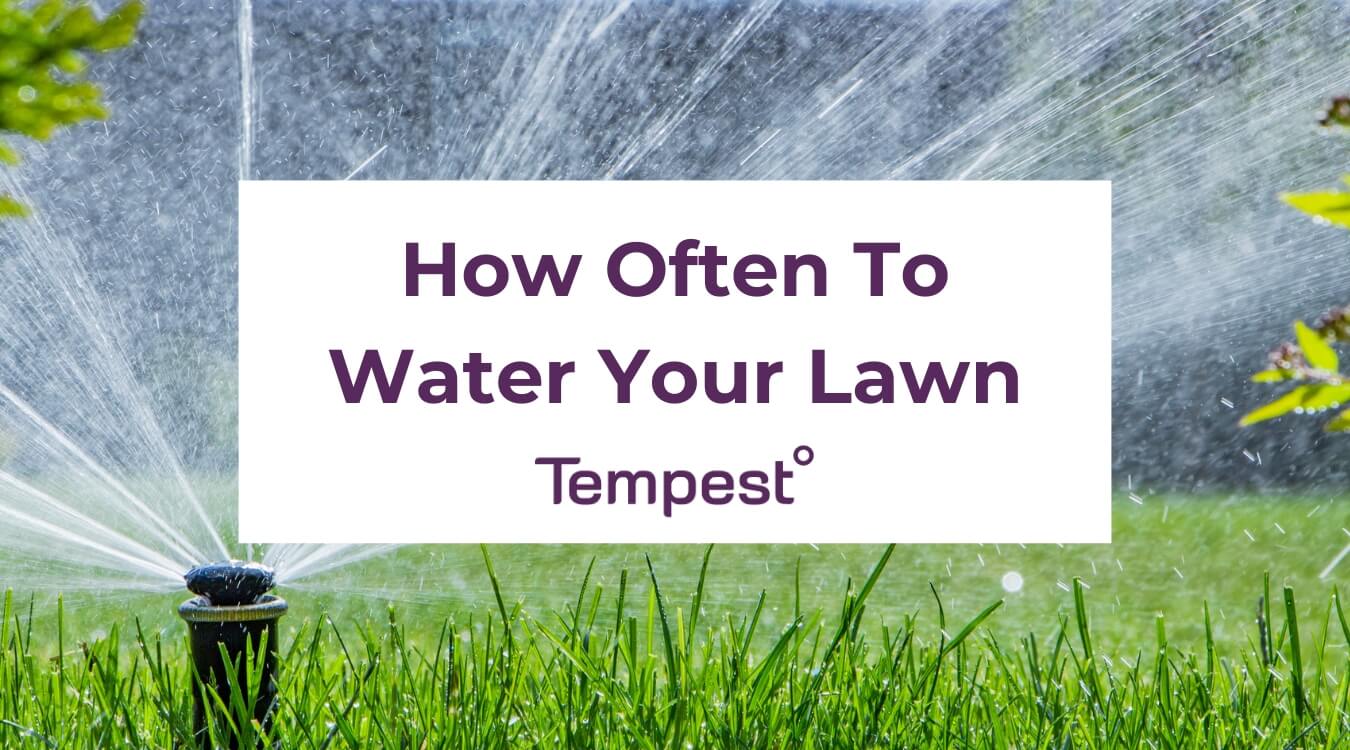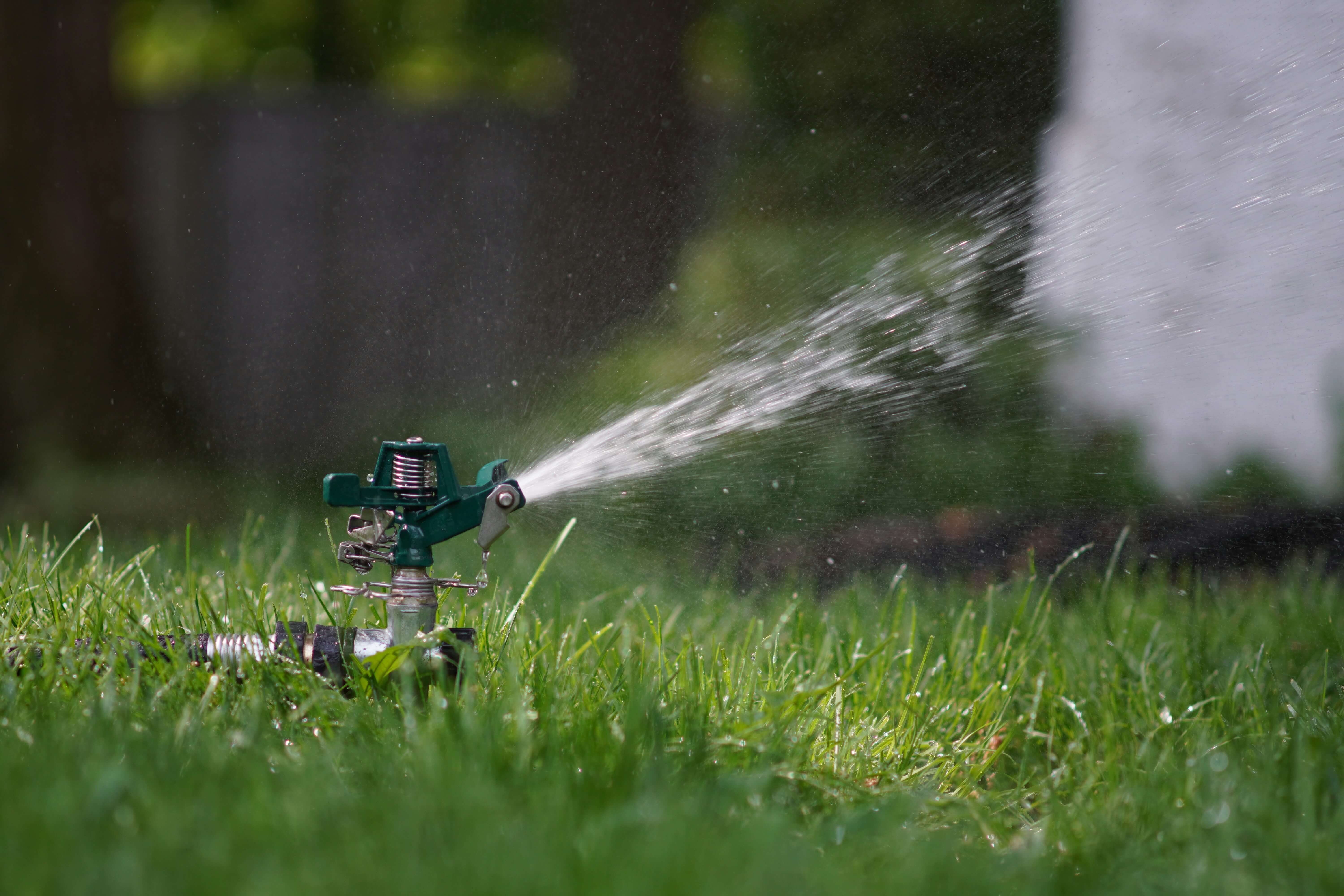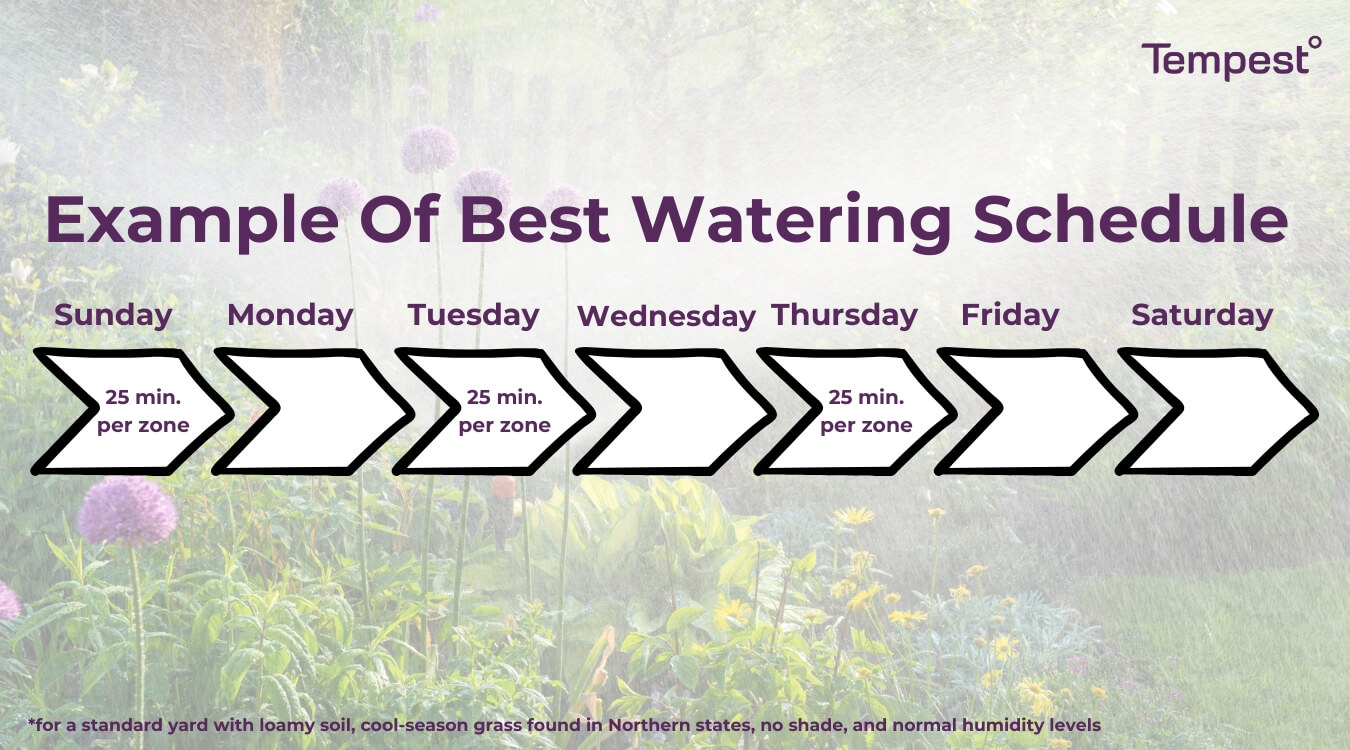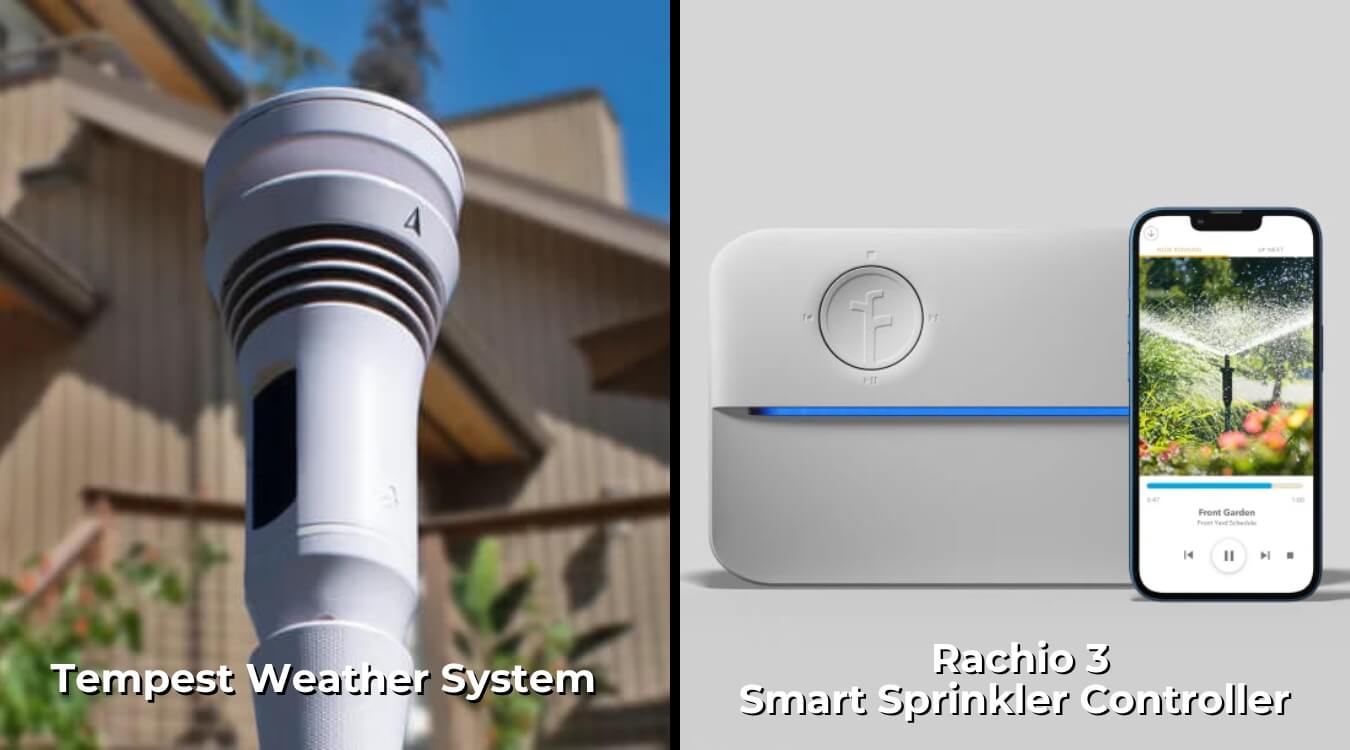
Worried that you’re over- or under-watering your lawn? The best lawn sprinkler schedule will depend on several factors, such as your local climate, soil type, and grass species.
A proper watering schedule and lawn care will leave you with a flourishing, lush yard. However, knowing how often the lawn should be watered is a common concern for many homeowners. In this guide, we’ll walk you through the different factors that influence how frequently your grass needs to be watered, a recommended watering schedule, and other lawn care tips for a healthy yard.
- What Impacts How Often You Should Water Your Lawn?
- How Often Should You Water Your Grass?
- When Should You Water Your Lawn?
- Best Lawn Watering Schedule
- Lawn Watering Tips
Use the Tempest Home Weather System to accurately monitor precipitation and other weather data in your area to better understand your lawn watering needs.
What Impacts How Often You Should Water Your Lawn?
There are several factors that influence how often your lawn needs watering. This includes things like soil type, grass variety, and environmental conditions — like whether your area has dry or humid heat. Understanding these factors will help you determine the optimal watering schedule for maintaining a healthy-looking lawn.
Type Of Grass And Soil
The type of grass in your yard will influence how often you need to water it:
- Warm-season grass: Requires less frequent watering.
- Cool-season grass: Requires more frequent watering.
You’ll also need to pay attention to the type of soil you have, as they each have different water retention and absorption properties:
- Sandy: Low water absorption and retention; requires more frequent watering sessions.
- Loamy: Great water retention requiring less frequent watering; risk of overwatering given how poorly it drains.
- Clay: Great absorption and moisture-retention properties; doesn’t need to be watered as frequently, though more prone to overwatering.
Climate
The local climate also affects the ideal lawn watering frequency. Things like temperature, rainfall, and humidity levels all impact how long the grass and soil will retain moisture after being watered.
In general, grass needs to be watered more frequently in hot climates and during the summer, as the moisture in the soil will evaporate more quickly. Plus, if you live in an area that already receives a good amount of precipitation each week, you may not need to supplement additional water.
Shade
The level of shade your yard receives impacts its watering needs. Shaded areas typically require less water than those exposed to direct sunlight, as they experience slower evaporation rates. Monitor the shaded zones of your yard, and plan to water these areas less frequently to avoid overwatering.
Challenge yourself in the new year with these fun and adventurous outdoor hobbies.
How Often Should You Water Your Grass?
General guidelines are to give your lawn 1 to 1½ inches of water per week in normal conditions. One inch is typically equivalent to one hour of watering. So, you can plan to distribute one to one and a half hours of watering your lawn throughout the week.
Whatever rhythm you find that’s best for your schedule, staying consistent with it will help maintain healthy grass without the risk of overwatering. Additionally, you can adjust the watering schedule as needed as local weather conditions change throughout the year or season. For example, during a particularly rainy week, you may choose to hold off on watering for a few days.
Do Lawns Need To Be Watered Every Day?
There’s a common misconception that lawns need to be watered every day. However, less frequent, deep watering is often a better method. Daily watering can lead to shallow roots and soil erosion and cause your lawn to dry up quicker in between watering.
Learn about the best weather for common gardening tasks like weeding, seeding, and tilling.
When Should You Water Your Lawn?
The time of day that you water your lawn also matters. Watering in the early morning is ideal before peak sunlight hours. Doing so during the day can be inefficient, as some of the water leaving the sprinkler will likely evaporate in the heat before saturating your lawn. The water that does reach the grass may also dry up more quickly before it can effectively absorb into the grassroots.
On the other hand, watering in the late evening can also be a mistake. This doesn’t give the water droplets enough time to soak into the soil, leaving the grass damp with moisture overnight, which can make it more prone to fungal growth and other issues.
How Long Should You Water Your Lawn?
Using the guidelines discussed above, the best lawn irrigation schedule is 20 to 30-minute sessions, two to three times per week. Rather than watering the lawn 10 to 12 minutes every day to achieve the weekly recommendation, these longer sessions will ensure deep soil penetration without causing runoff.
Smart sprinkler controllers, like the Rachio 3, are great tools to help you maintain an optimal lawn watering schedule. These tools monitor observations like soil moisture and upcoming forecasts to inform your watering schedule.
See how meteorologists create weather forecasts using a combination of current weather data, historical trends, and individual expertise.
Best Lawn Watering Schedule
The ideal watering schedule will vary for each individual homeowner. Again, depending on the type of grass and soil in your yard, how much shade it receives, and other environmental factors, you may need to water the lawn more or less than the recommended 1 to 1½ inches per week.
For a standard yard with loamy soil, the cool-season grass found in Northern states, no shade, and normal humidity levels, the ideal summer watering routine might look as follows:
- Sunday: 25 minutes per zone
- Tuesday: 25 minutes per zone
- Thursday: 25 minutes per zone
Someone living in Southern states with warm-season grass, clay soil, and a more shaded lawn might limit watering to 30 minutes twice a week. Either way, try to stick to a consistent routine once you set a watering schedule. However, you can tweak it over time in response to changing weather conditions, seasonal changes, and lawn health.
Signs Of Underwatering
Once you set a watering schedule for your lawn, watch for these signs of underwatering to help adjust your watering practices and keep the grass healthy:
- Yellow or brown areas
- Dry or dead patches
- Footprint marks remain after walking across the grass
- Grass blades starting to curl at the top
Signs Of Overwatering
Likewise, you’ll need to look for signs of overwatering your lawn, which could put you at risk of root rot or water waste. If you notice these signs, gradually cut back on your weekly watering until you see signs of improvement:
- Puddles of water on the lawn
- Spongy feeling ground
- Overgrowth of weeds
- Fungal growth and pests
Lawn Watering Tips
Aside from setting a good watering schedule, there are some additional tips you may want to adopt for effective lawn watering, such as:
- Avoid watering during windy conditions to prevent water waste
- Use automatic sprinklers that you can pre-program to start and stop on certain days and times
- Use a hose to soak roots when the lawn dries out from being underwatered
- Stop watering in the fall when the grass stops growing and temperatures dip near freezing
- Start watering in the spring when the ground has thawed and temperatures are consistently above 40 degrees Fahrenheit
How To Conserve Water While Keeping Your Lawn Healthy
Many homeowners are interested in striking the balance between adequate hydration for proper lawn care with thoughtful water conservation. There are many ways to use water efficiently while maintaining a healthy lawn, including tips discussed above, like avoiding watering when it’s windy or during peak sunlight.
You can also use advanced tools like the Rachio 3 Smart Sprinkler Controller to make environmentally-conscious watering decisions with ease. The Rachio 3 monitors real-time weather data and forecasts to inform when to skip a watering cycle based on current conditions where you live.
Get Accurate Local Rain Readings With The Tempest Weather System
Taking care of your lawn with a proper watering schedule will keep your grass looking luscious and vibrant. Make sure to adapt the recommended watering routine to your lawn’s unique characteristics and local climate for optimal growing.
Shop the Tempest Home Weather System today for a guaranteed better forecast and precise local weather data to inform your lawn watering schedule. Also, check out the Rachio 3 Smart Sprinkler Controller for optimized lawn watering.


